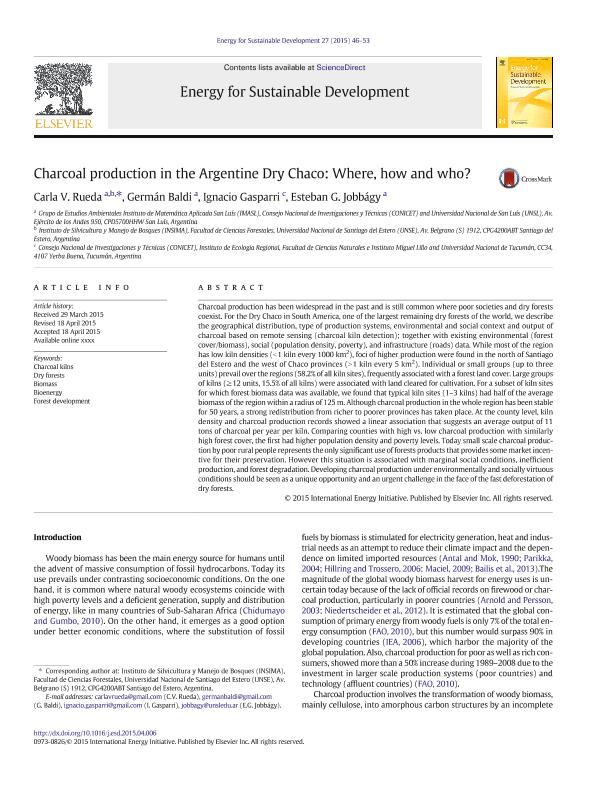Artículo
Charcoal production in the Argentine Dry Chaco: Where, how and who?
Fecha de publicación:
08/2015
Editorial:
Elsevier Inc
Revista:
Energy for Sustainable Development
ISSN:
0973-0826
Idioma:
Inglés
Tipo de recurso:
Artículo publicado
Clasificación temática:
Resumen
Charcoal production has been widespread in the past and is still common where poor societies and dry forests coexist. For the Dry Chaco in South America, one of the largest remaining dry forests of the world, we describe the geographical distribution, type of production systems, environmental and social context and output of charcoal based on remote sensing (charcoal kiln detection); together with existing environmental (forest cover/biomass), social (population density, poverty), and infrastructure (roads) data. While most of the region has low kiln densities (<1 kiln every 1000km2), foci of higher production were found in the north of Santiago del Estero and the west of Chaco provinces (>1 kiln every 5km2). Individual or small groups (up to three units) prevail over the regions (58.2% of all kiln sites), frequently associated with a forest land cover. Large groups of kilns (≥12 units, 15.5% of all kilns) were associated with land cleared for cultivation. For a subset of kiln sites for which forest biomass data was available, we found that typical kiln sites (1-3 kilns) had half of the average biomass of the region within a radius of 125m. Although charcoal production in the whole region has been stable for 50years, a strong redistribution from richer to poorer provinces has taken place. At the county level, kiln density and charcoal production records showed a linear association that suggests an average output of 11 tons of charcoal per year per kiln. Comparing counties with high vs. low charcoal production with similarly high forest cover, the first had higher population density and poverty levels. Today small scale charcoal production by poor rural people represents the only significant use of forests products that provides some market incentive for their preservation. However this situation is associated with marginal social conditions, inefficient production, and forest degradation. Developing charcoal production under environmentally and socially virtuous conditions should be seen as a unique opportunity and an urgent challenge in the face of the fast deforestation of dry forests.
Palabras clave:
BIOENERGY
,
BIOMASS
,
CHARCOAL KILNS
,
DRY FORESTS
,
FOREST DEVELOPMENT
Archivos asociados
Licencia
Identificadores
Colecciones
Articulos(CCT - NOA SUR)
Articulos de CTRO.CIENTIFICO TECNOL.CONICET - NOA SUR
Articulos de CTRO.CIENTIFICO TECNOL.CONICET - NOA SUR
Citación
Rueda, Carla Vanezza; Baldi, Germán; Gasparri, Nestor Ignacio; Jobbagy Gampel, Esteban Gabriel; Charcoal production in the Argentine Dry Chaco: Where, how and who?; Elsevier Inc; Energy for Sustainable Development; 27; 8-2015; 46-53
Compartir
Altmétricas




